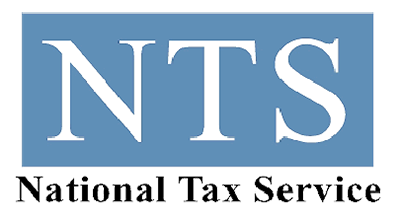Annual Report Finds IRS Rose to Challenges of an “Unprecedented” Year

Ask most people what they thought of 2020, and the response is likely to be something like, “disastrous,” “catastrophic” — even “unprecedented.”
Ask IRS Commissioner Chuck Rettig, though, and he might say 2020 was his agency’s finest hour.
The just-departed year, while marked with turmoil and a pandemic, showcased the IRS’ ability to carry out a mission, no matter what the circumstances.
Annual report released
The IRS has released its annual report for 2020, which spotlights its work delivering taxpayer service and continuing compliance efforts in a year that saw the COVID-19 coronavirus challenge all aspects of the agency’s mission.
“Internal Revenue Service Progress Update/Fiscal Year 2020 – Putting Taxpayers First” outlines how the agency overcame difficulties during the pandemic to deliver Economic Impact Payments in record time. At the same time, IRS employees made adjustments to complete a successful filing season despite office closures and the latest tax deadline ever.
“The COVID-19 pandemic presented some of the greatest challenges to the IRS in its history, both in terms of being able to carry out our mission and in protecting the health and safety of taxpayers and our own workforce,” Commissioner Rettig wrote in the report’s opening message and addressed in his ‘A Closer Look’ column. “IRS employees responded admirably by quickly facilitating financial assistance to millions of deserving and needy Americans.”
But the 44-page report isn’t just about the pandemic and overcoming its challenges. It also documents the agency’s progress toward six strategic goals and documents the ongoing effort to modernize the American tax system.
In addition, the 2020 report shows work completed on implementing the Taxpayer First Act.
“Even with all the challenges, we believe we have made great strides during Fiscal Year 2020, but we want to do more,” Rettig said.
Rettig explained that each year the IRS collects more than $3 trillion in taxes and generates approximately 96% of the funding that supports the federal government’s operations.
“My experiences as Commissioner have strengthened my belief that a fully functioning IRS is critical to the success of our nation,” he said. “When citizens can perform their civic duty each year by preparing and filing their taxes and paying only what they should, they help fund critical aspects of the United States ranging from schools and roads to Social Security payments and the nation’s military.”
Service came first
The 2020 Annual Report lays out numerous examples of how IRS employees helped taxpayers during a very challenging year:
- Expanded information and assistance available to taxpayers in additional languages and underserved communities to help deliver Economic Impact Payments and other services.
- Adjusted agency processes through the People First Initiative to help people and businesses encountering payment and other challenges during the pandemic.
- Offered an electronic filing option for amended tax returns with the new Form 1040-X, marking a major milestone to help taxpayers and the tax community.
- Served their communities outside official duties through charitable donations and service projects.
The report also illustrates ways IRS employees worked to maintain the tax system through a strong, visible and robust tax enforcement presence. It says the agency enhanced its criminal investigation and civil enforcement efforts with an expanded use of data analysis and artificial intelligence across all lanes, from selection to examination.
In the Progress Update section, the report touts the IRS’ work partnering on landmark criminal investigations that brought down child pornography, drug and terrorist organizations.
The IRS, the report explains, continues to increase its pursuit of those who promote and use abusive tax shelters – including syndicated conservation easements. The agency has seen successful Tax Court results on these cases, as well as completion of its first settlement initiative.
The report also details the IRS’ Integrated Business Modernization Plan, which is a roadmap that guides the agency move to offer best-in-class customer service. This level of service is what people are accustomed to have when dealing with an online retailer or financial institution.
“As we move into the future, the name of the game for the IRS will continue to be innovation, creativity and service to the people of our country to make their world better,” Rettig said. “Given all we’ve accomplished together in 2020 and all we’re working to achieve, we believe the future looks bright for the IRS, the tax system and our nation.”


